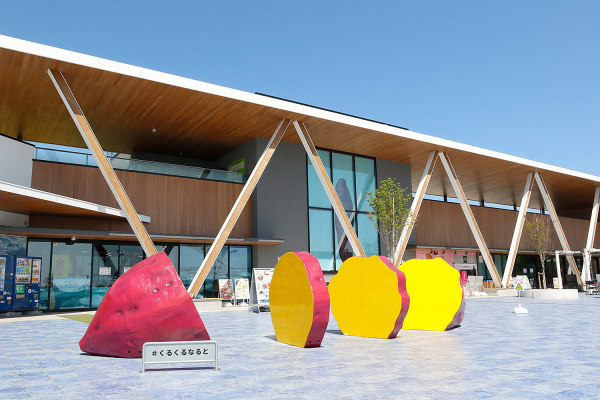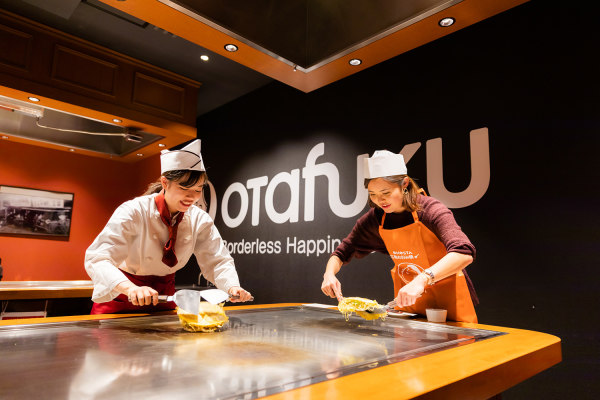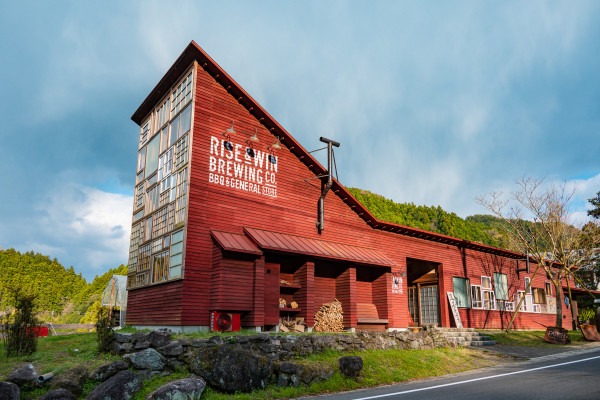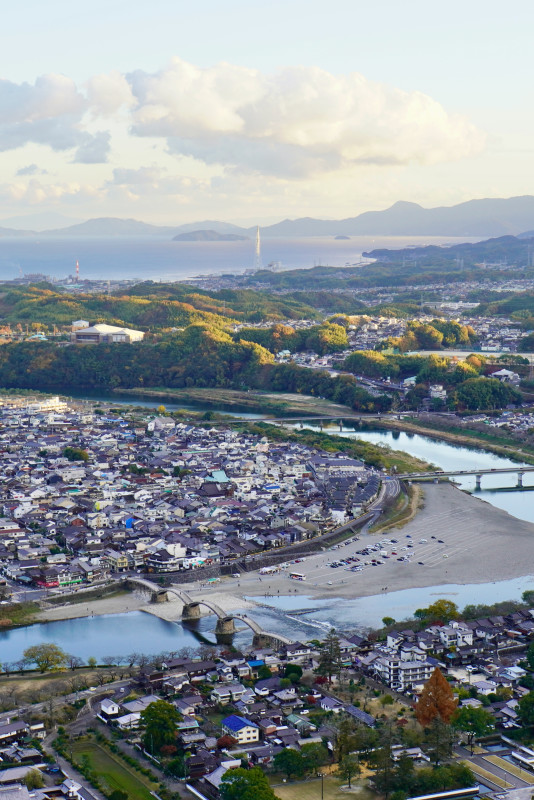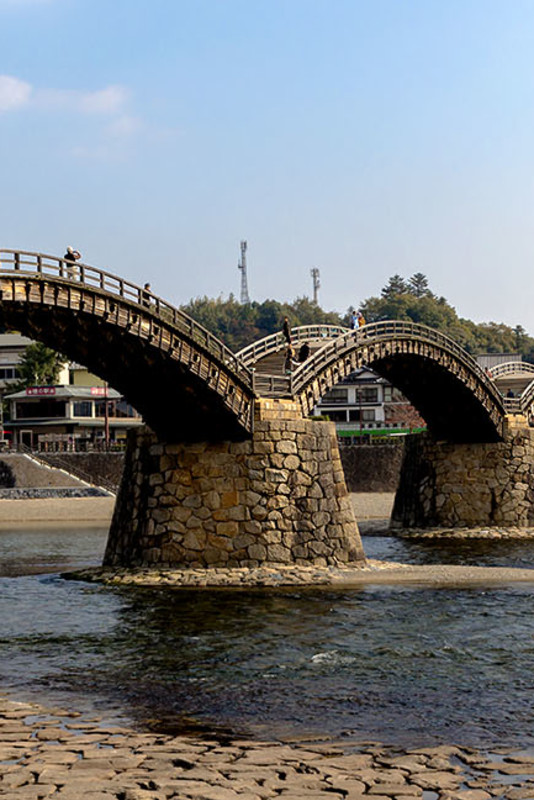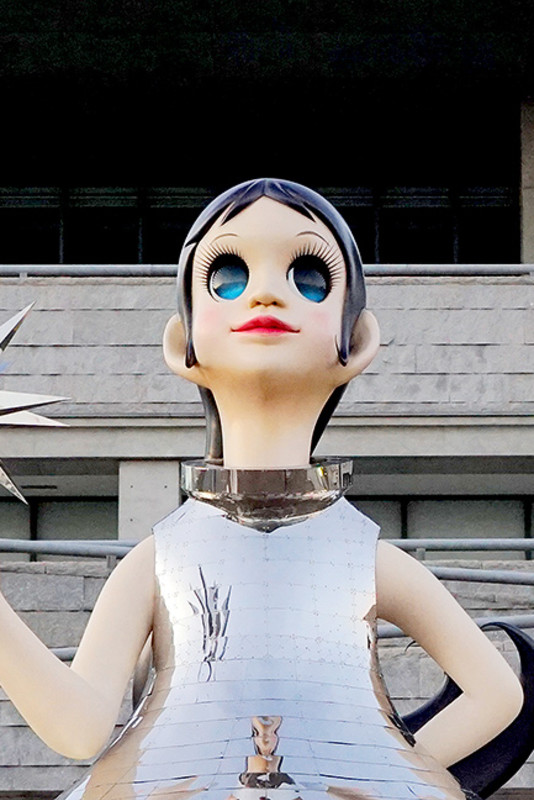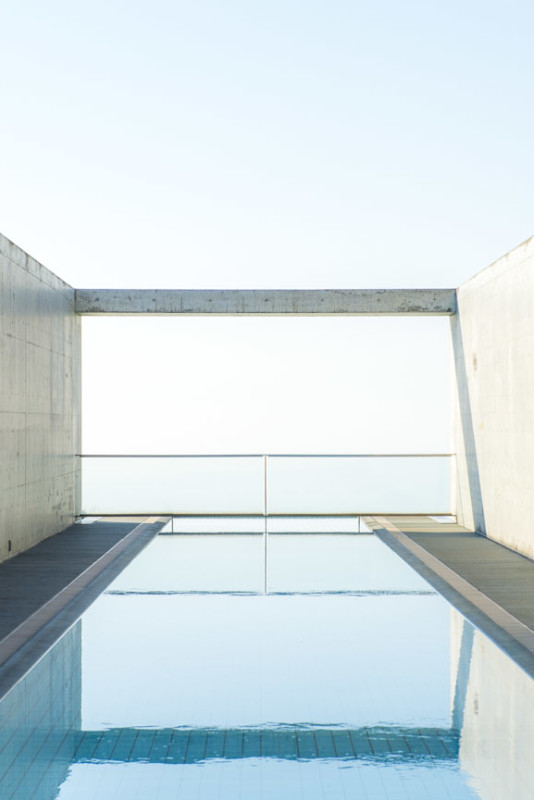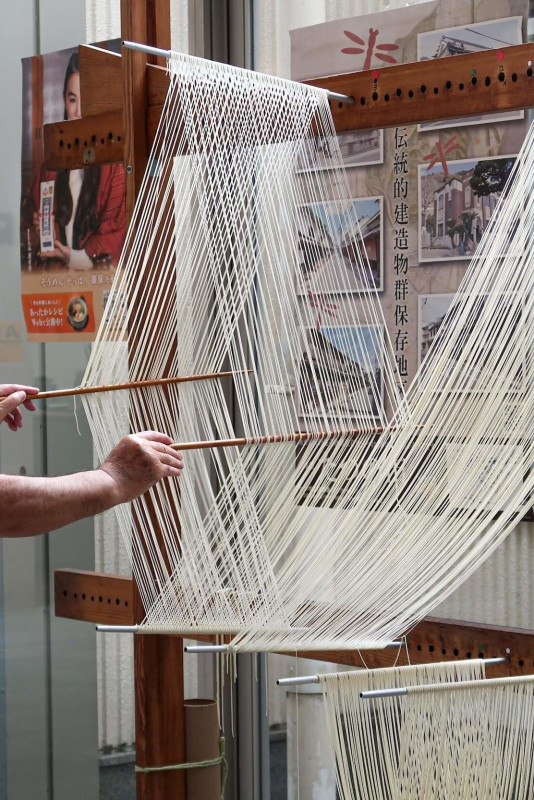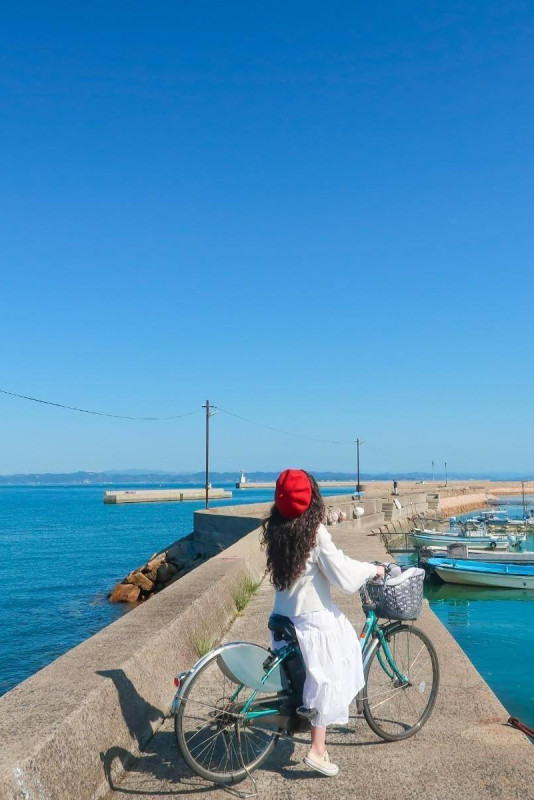Itineraries
Explore Japan’s Art Islands by Charter Boat

In this four-day itinerary, we invite you to explore the famed Setouchi art islands, home to the Setouchi Triennale art festival, where you’ll experience some of the most remarkable art installations in Japan along with the wonderful landscapes of the Seto Inland Sea. Immerse yourself in traditional island culture and gastronomy while enjoying fine arts and architecture in a natural setting for what promises to be an unforgettable adventure.
- Day 1
- Naoshima
Travel: Osaka to Naoshima
After arriving in Okayama from Osaka aboard the Shinkansen, you will switch gears and hop on La Malle de Bois, a unique sight-seeing train on which art and nature mix perfectly. After a short, 10-minute boat ride, you will be welcomed by Yayoi Kusama’s Red Pumpkin on Naoshima, the most renowned of Japan’s art islands.
Travel note
Although public transport is available, this itinerary assumes visitors will travel by private charter boat to allow them to cover a wide range of attractions in comfort in a limited time. You can find public ferry information in English here.
Chichu Art Museum
One of Tadao Ando’s masterpieces, the Chichu Art Museum is one of the most unique museums in the world. Built underground (“chichu” means underground in Japanese) and lit almost entirely with natural light, it houses a handful of artworks by James Turrell, Walter de Maria, and Claude Monet. The room in which Monet’s Water Lillies is displayed was designed around the paintings to provide the best possible viewing experience. The final work of art is the building itself. The Chichu Museum is not a place where you simply see art. It is one where you are fully immersed in a space where art, architecture, and nature meet seamlessly.
Benesse House Museum
The original museum on Naoshima designed by Tadao Ando is the home of various artworks by famed international contemporary artists. This fascinating labyrinthine building is where Ando’s view of mixing art, architecture, and nature took shape and large windows and open spaces are designed to showcase the grandeur of the surrounding Seto Inland Sea itself.
Art House Project
Located in the fishing village of Homura, the Art House Project consists of several traditional buildings that have been renovated and turned into contemporary art spaces, by artists including James Turrell, Tadao Ando, Shinro Ohtake, and Rei Naito. Hiroshi Sugimoto rebuilt an abandoned Shinto shrine, giving it new life as an actual shrine that doubles as a work of art.
Accommodation: Benesse House
Benesse House is not only a museum but also a hotel and Benesse House Oval is the most luxurious of its four sections (the others being the Museum, Park and Beach) section. Accessible by a small monorail, it is located on top of a hill, and each room commands a sweeping view of the Seto Inland Sea and is decorated with original artworks. Hotel guests have the privilege to experience the Benesse House Museum after hours in a completely different atmosphere, when other visitors are gone, and the sun has set.
Issen, the Museum Restaurant will let you discover fine traditional Japanese cuisine centered around the local seafood and the Terrace Restaurant, located right by the Seto Inland Sea, gives local ingredients and French interpretation. End your day with a night visit to the Sugimoto Gallery or a walk by the sea surrounded by Nikki de Saint-Phalle sculptures and Kusama’s iconic “Pumpkin”.
URL: https://benesse-artsite.jp/stay/
- Day 2
- Teshima and Inujima
Travel: Naoshima to Teshima
・Approx 20 minutes by chartered boat
Teshima Art Museum
Just a short boat ride away, on the second day, you will discover the island of Teshima where the theme of art meets nature reaches its epitome.
The Teshima Art Museum is unlike anything you may have seen before. Your visit starts with a walk along a small path with a splendid view of the nearby terraced rice fields cascading into the sea, as a reminder that, despite all the wonderful art on the Setouchi islands, the most beautiful things to be seen are the ones shaped by nature itself.
Elsewhere on Teshima, artworks, often embedded in nature, can be found all over the island. Christian Boltanski’s “Les Archives du Cœeur” is not just an art installation, but also a repository of thousands of heartbeats from all over the world. You can even have your own heartbeat recorded.
Shima Kitchen
The best place to have lunch on Teshima is Shima Kitchen. With its wooden roof slowly becoming a canopy as it extends way beyond the building itself, you can appreciate the outdoors during your lunch while remaining indoors if needed. Run by local residents, it is a great place to feel the local community vibe. The dishes - all prepared with seasonal ingredients from the island - are designed and prepared as a collaboration between the chefs from the Marunouchi Hotel in Tokyo and the island’s grandmothers. Shima Kitchen is a feast for both architecture and gastronomy enthusiasts.
Travel: Teshima to Inujima
・Approx 15 minutes by chartered boat
Inujima Seirensho Art Museum
A former copper refinery on the tiny island of Inujima has been turned into a singular museum by artist Yukinori Yanagi and Hiroshi Sambuichi. Just like its counterparts in Naoshima and Teshima, art installations and architecture merge into an out-of-this-world experience.
Travel: Inujima to Naoshima
・Approx 30 minutes by chartered boat
Accommodation: Ryokan Roka
On returning to Naoshima you will spend the night at Ryokan Roka. At Roka, tradition is the keyword. You’ll experience the real ryokan experience, from the moment you walk in its front zen rock garden until you fall asleep in your tatami room after having relaxed in your own private open-air bath. For dinner, you’ll be served local and seasonal kaiseki cuisine unless you want to try the sushi menu. Both are prepared with local fish and seasonal ingredients. The inn’s spa offers re-energizing shiatsu massages and at the bar, you can enjoy homemade herbal liqueurs as well as non-alcoholic cocktails. At night, the patio is lit with an outdoor fireplace, where you can warm yourself in the colder months while drinking green tea. And, being on Naoshima, art is never far away; Ryokan Roka displays the art of some of Japan’s emerging talent year-round.
URL: https://roka.voyage/en/
- Day 3
- Shodoshima
Travel: Naoshima to Shodoshima
・Approx 35 minutes by chartered boat
Setouchi's "Olive Island"
Shodoshima, the second-largest island of the Seto Inland Sea, rose to fame for being the only place in Japan where olives are successfully grown. However, it has much more to offer. Shodoshima is blessed with amazing landscapes where the sea and mountains cohabit in harmony and help perpetuate centuries-old traditions, local food and, of course, art.
Art on Shodoshima
In the village of Umaki, you can enjoy the George Gallery houses permanent installations by George Rousse as well as the Hishio-no-Sato Museum of Contemporary Art, a new small art museum located right next door that exhibits a surprisingly large number of works from various Japanese artists. Outdoor artworks and installations are spread all over the island - many of them whimsical and humorous. Regent in Olives is a giant olive with a pompadour (known as a regent in Japan) that welcomes visitors in the middle of a small olive grove and the Human Home Hermit Crab is the sculpture of a giant hermit crab that has chosen an actual house as its shell.
Morikuni Saké Brewery
A few years ago, Aki Ikeda made Shodoshima her home and took on the challenge to start brewing sake here. Using traditional techniques, but not afraid to innovate - creating their own kind of yeast from the olives growing on the island - Morikuni is today one of the finest sake breweries in the region. Whether you are a sake connoisseur, or just curious, stop by to taste and learn about their original and varied creations.
Yamaroku Soy Sauce
While sake is relatively new to Shodoshima, soy sauce production on the island has a long history, and Yamaroku is possibly the best soy sauce in Japan. The Yamamoto family has been making soy sauce in traditional cedar wood barrels, some of them more than a century old, for five generations. The building is even older and the yeast colonies that inhabit the wooden parts of the building and old barrels are a key ingredient in Yamaroku’s soy sauce. Yamaroku soy sauce is found in Tokyo’s most prestigious restaurants and, rumor has it, in the Imperial Palace itself.
Kankakei Gorge
As well as art and artisans, Shodoshima has many delightful landscapes, the most breathtaking is considered to be Kankakei Gorge. Located on the southern slopes of Shodoshima’s biggest mountain, it is said to be one of the most beautiful gorges in Japan, especially when the trees get their fiery autumn foliage in November. The best way to admire the gorge is to ride the ropeway that climbs along the gorge and offers a spectacular view. Nearby, Sekimon-do Temple, part of the island’s own 88 temple pilgrimage, is built around and inside a cave. Angel Road, a strip of sand connecting Shodoshima with a small islet that only appears at low tide, is one of Shodoshima’s main attractions. Legend has it that walking the path while holding hands with your loved one will bring you good luck.
Lunch on Shodoshima
Morikuni Saké Brewery has a cafe which offers various sake tasting lunches where you can try local recipes that match their different kinds of sake. Near Olive Park, Koyomi is a delicious kaiseki restaurant serving creative and original recipes made from local and seasonal products, including vegetarian options. And because it’s located by the beach, the view adds to the atmosphere. Meat lovers may want to try Higyu which specializes in Olive Wagyu Beef, a type of beef coming from cows raised on olive feed and that is unique to the island.
Olivean Shodoshima Yuhigaoka Hotel
Enjoy incredible views of the Seto Inland Sea islands and stunning sunsets from the recently refurbished suites on the Olivean Shodoshima Yuhigaoka Hotel’s Executive Floor. Soaking in the slightly alkaline waters of the on site hot springs will soak away the tiredness of travel and is a treat for your skin.
URL: https://olivean.com/en/
- Day 4
- Ogijima, Megijima and Takamatsu
Travel: Shodoshima to Ogijima
・Approx 30 minutes by chartered boat
Ogijima and Megijima
Discover two of the smaller islands of the area, as well as Takamatsu, the main coastal city of the region.
Ogijima
With its tiny village nestled on the hillside, Ogijima is the definition of picturesque and it is here that the concept of revitalization through art has truly been realized. Stepping off the boat, you are greeted by Ogijima’s Soul, a building designed by Jaume Plensa, with its roof made of letters from different languages, and art is everywhere to be found on the island. But what makes Ogijima special is that the art is intrinsically linked to the community; painted wooden walls in the streets, decorated boats in the port, a playground for children that is also a sculpture, and the onba, the small carts that old women push around the steep slopes of the village, each one of them is a unique and original artwork.
Travel: Ogijima to Megijima
・Approx 5 minutes by chartered boat
Megijima
Ogijima’s neighbor and “sister island” is most famous for being the likely location of the “Ogre cave” in the legend of Momotaro, one of Japan’s most popular folk tales. It is also home to some of the Setouchi Triennale’s art sites, including Island Theatre Megi, a small cinema reminiscent of the New York theaters from the Golden Age.
Travel: Megijima to Takamatsu
・Approx 10 minutes by chartered boat
Ritsurin Garden
Ritsurin Garden, which took about a century to be completed, used to be the local feudal lord’s private garden. Now, almost three hundred years later, it is still one of the most beautiful gardens in Japan. Every single spot in the garden was designed to be viewed and appreciated from a picturesque approach, reminding us that the idea of using nature as art is not a recent invention in Japan. Walk around the ponds where hundreds of koi carp live, take a ride on a traditional wooden boat or drink matcha tea in one of the tea houses that date from feudal times.
Kagawa Prefectural Government Office East Building
This building is considered one of Kenzo Tange’s most representative works, especially of his early period. While mostly made of concrete, its structure makes it look like a traditional wooden building. Some say that it’s one of the most important works of contemporary Japanese architecture. Be sure to admire Genichuro Inokuma’s ceramic tile wall in the main hall. A native of Kagawa, he has a museum dedicated to him in the nearby city of Marugame.
Isamu Noguchi Garden Museum
End your trip on a high note at the Isamu Noguchi Garden Museum. During his later years, the Japanese-American artist had a studio and a house in the village of Mure (now a part of Takamatsu), located near Kagawa’s famous Aji granite quarries. After his passing, the site was turned into a museum that now exhibits more than 150 of his works, some of them unfinished at the moment of his death.






































































